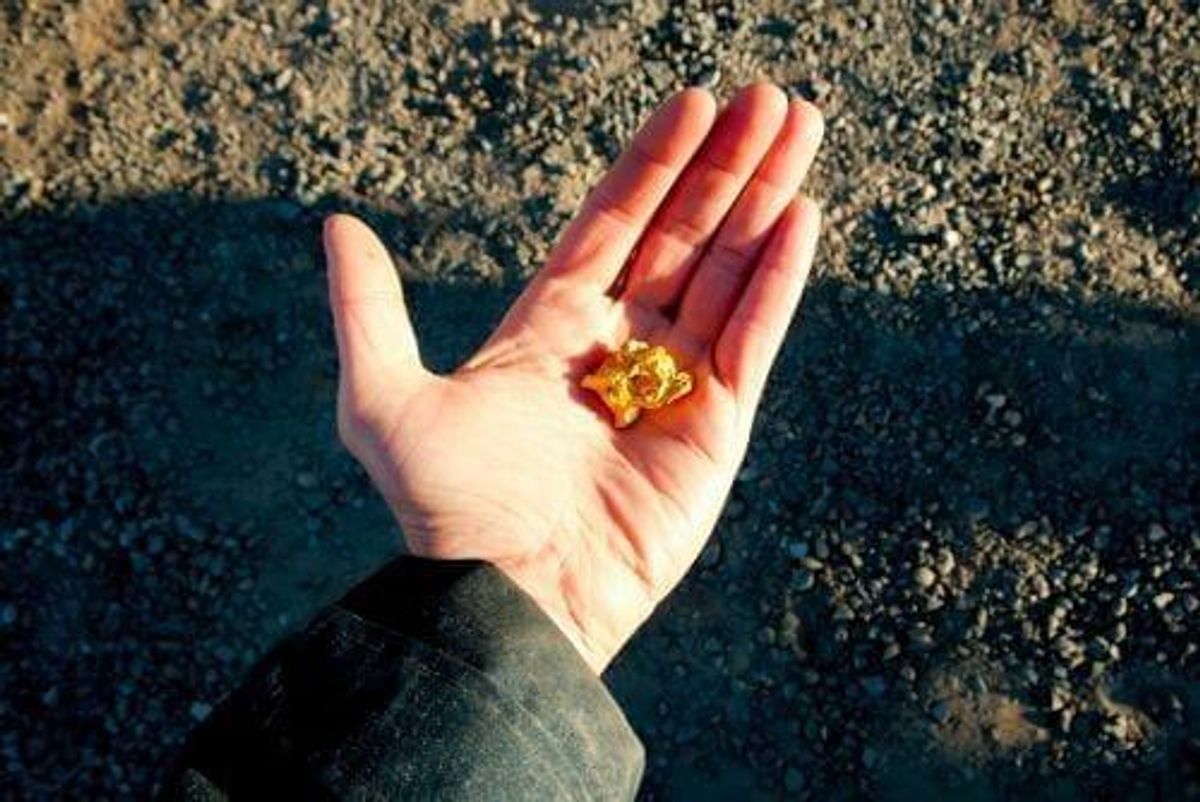5 Basic Facts About Gold
May. 17, 2022 01:50PM PST
Looking to invest in gold? Here are five basic facts about gold that investors interested in the precious metal should know about.

Gold has diverse uses, and throughout history it has been widely used in art, jewelry and technology.
But the precious metal has also long been considered a safe haven, and many investors turn towards it during tough political and economic times. Physical gold bullion coins are a common way to get exposure, but other ways to jump into the space are exchange-traded funds (ETFs), gold futures, options and gold company stocks.
Gold is arguably a solid long-term investment, so those new to the sector will be curious to know more about the yellow metal before jumping into the market. Here are five basic facts about gold that all investors should know.
1. Basic facts about gold: It is the only metal that’s yellow
While other metals may develop a yellowish hue or color, that typically only happens after they have reacted with other chemicals. Gold is the only naturally yellow metal on the market.
Pure gold is yellow in part because it absorbs blue light more than other visible wavelengths of light. A substance absorbing blue light will reflect the rest of the spectrum.
Gold is on the last row of the periodic table with the atomic number 79 and the chemical symbol Au. With 79 protons in its nucleus, the electrons of a gold atom are subjected to a powerful electrostatic attraction. As a noble metal, gold is resistant to chemical attacks, even at high temperatures.
2. Basic facts about gold: Different forms of investment
As touched on above, new investors have many different options when they are looking to garner money through investing in the yellow metal. In some parts of the world, buying gold in the form of jewelry remains the largest and most traditional method of obtaining gold supply, particularly in India.
For the most part, buying and gifting gold jewelry is done for sentimental value — it is more expensive to buy gold jewelry than to simply purchase a gold nugget. Should investors choose gold jewelry, it is important to keep in mind karat amounts and their relation to price.
Aside from jewelry, gold investing can be done in a number of other ways, including:
- Gold bars and coins: This includes regular coins, collectible coins and gold bullion bars. They can be stored at a financial institution or personally.
- Gold ETFs: Most gold ETFs track the physical gold price. According to Gold.org, in terms of grams of gold mined, one gold-backed ETF unit typically represents 1 gram of the yellow metal; ETFs can be bought and traded on stock exchanges.
- Gold-focused stocks: When investing in gold companies, investors should know how volatile the market can be. Gold-mining stocks in particular can have a three-to-one leverage on the gold price.
- Gold futures: A futures agreement allows gold to be traded at a predetermined amount or price with a settlement day in the future. This means that the investor doesn’t have to pay for the gold at the time the agreement is made, nor does the seller have to provide the investor with the gold until the agreed-upon date.
3. Basic facts about gold: It is not consumed
Contrary to popular belief, gold isn’t consumed like many other commodities. The metal isn’t burned like gas and coal, and only about 12 percent of the world’s gold is used for industrial purposes.
A small portion of gold is used in electronics, computers, the medical and dental fields and in the aerospace sector to lubricate mechanical pieces. The remainder is used in jewelry and for investment, such as gold coins and bars.
Unlike gas and coal or even copper, almost all of the gold that has been produced over time still exists and is held by institutions or by people.
4. Basic facts about gold: It is the most malleable metal
Malleability can be defined as how easily a metal can be hammered or pressed out of its shape without breaking or cracking. Gold is the most malleable of the metals — 1 ounce can be beaten into a sheet of roughly 5 meters on one side. The resulting sheet of gold can then be struck enough times that it becomes so thin it’s transparent.
Not only that, but the yellow metal can be rolled, twisted and squeezed into a variety of shapes, all while remaining intact; this is often done during jewelry making. Gold ranges between a two to three out of 10 on the hardness scale. Only when the yellow metal reaches its melting point can its purity be dismantled due to temperature.
5. Basic facts about gold: It can be viewed as a currency
Last, but certainly not least, gold has interesting currency-like tendencies. BMG Bullion notes that gold retains its purchasing power better than paper currencies.
While gold works as a currency, many don’t see it as one, as you can’t exactly use it to buy food at the grocery store. But, similar to other currencies, it has a price that fluctuates — as seen through recorded history, it typically increases as the US dollar drops and falls as the dollar moves up. The yellow metal can also be bought and stored, and it has the ability to be converted into money in a variety of currencies.
This is an updated version of an article first published by the Investing News Network in 2016.
Don’t forget to follow us @INN_Resource for real-time news updates!
Securities Disclosure: I, Melissa Pistilli, hold no direct investment interest in any company mentioned in this article.
From Your Site Articles
- Top 5 Gold Stocks on the TSXV in 2022 ›
- Top 5 Gold Stocks on the TSX in 2022 ›
- 12 Largest Producers of Gold by Country (Updated 2022) | INN ›
- What are Gold Futures? | INN ›
- A Guide to Physical Gold as an Investment | INN ›
- An Overview of Gold Investing and Prices | INN ›
- What is Coltan? 5 Facts You Should Know ›
- Mining Gold in Africa: A Look at Ghana, Mali and Burkina Faso | INN ›
Related Articles Around the Web
https://twitter.com/INN_Resource
https://www.linkedin.com/in/melissa-pistilli-865271a9/
mpistilli@investingnews.com






